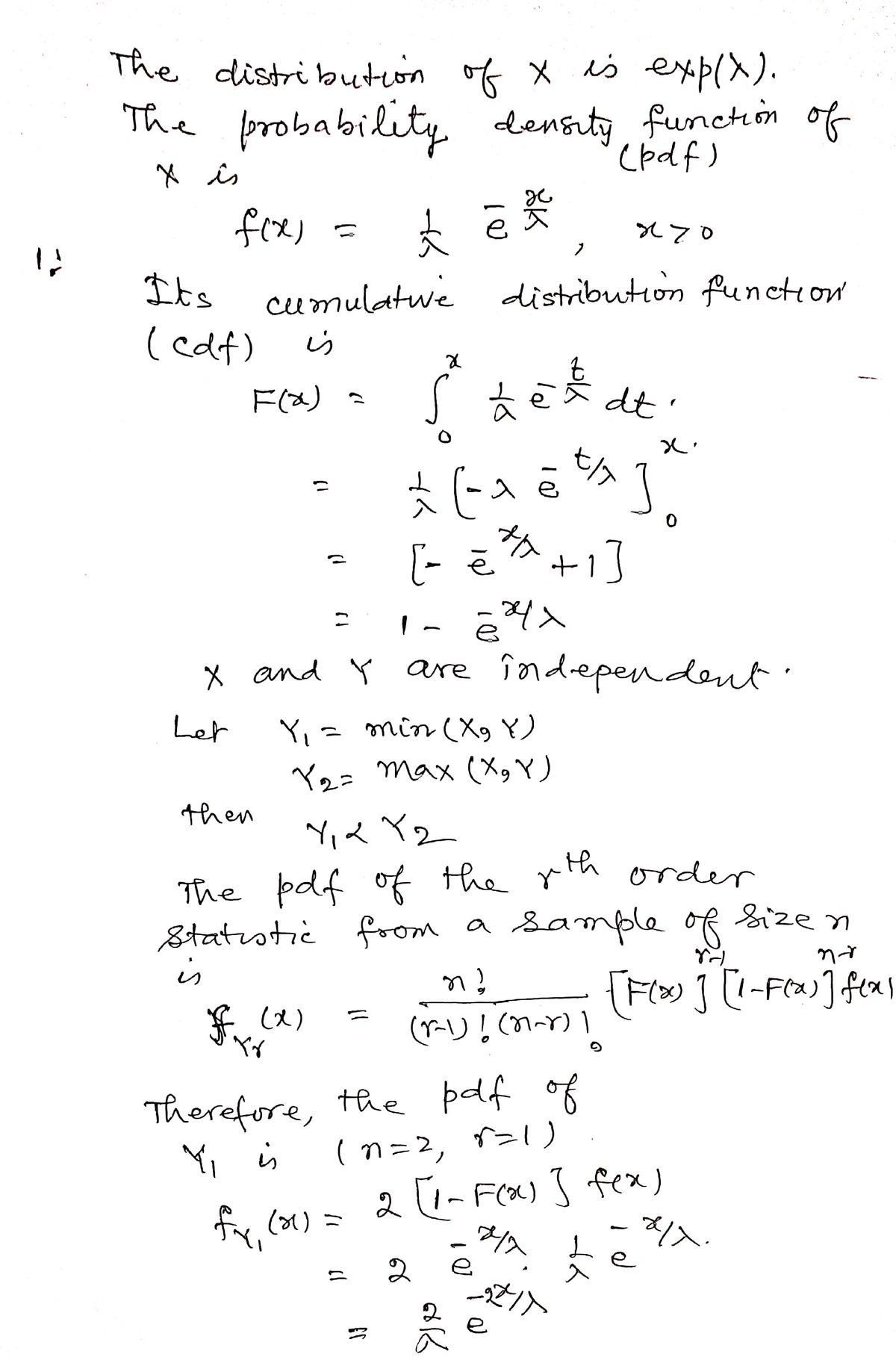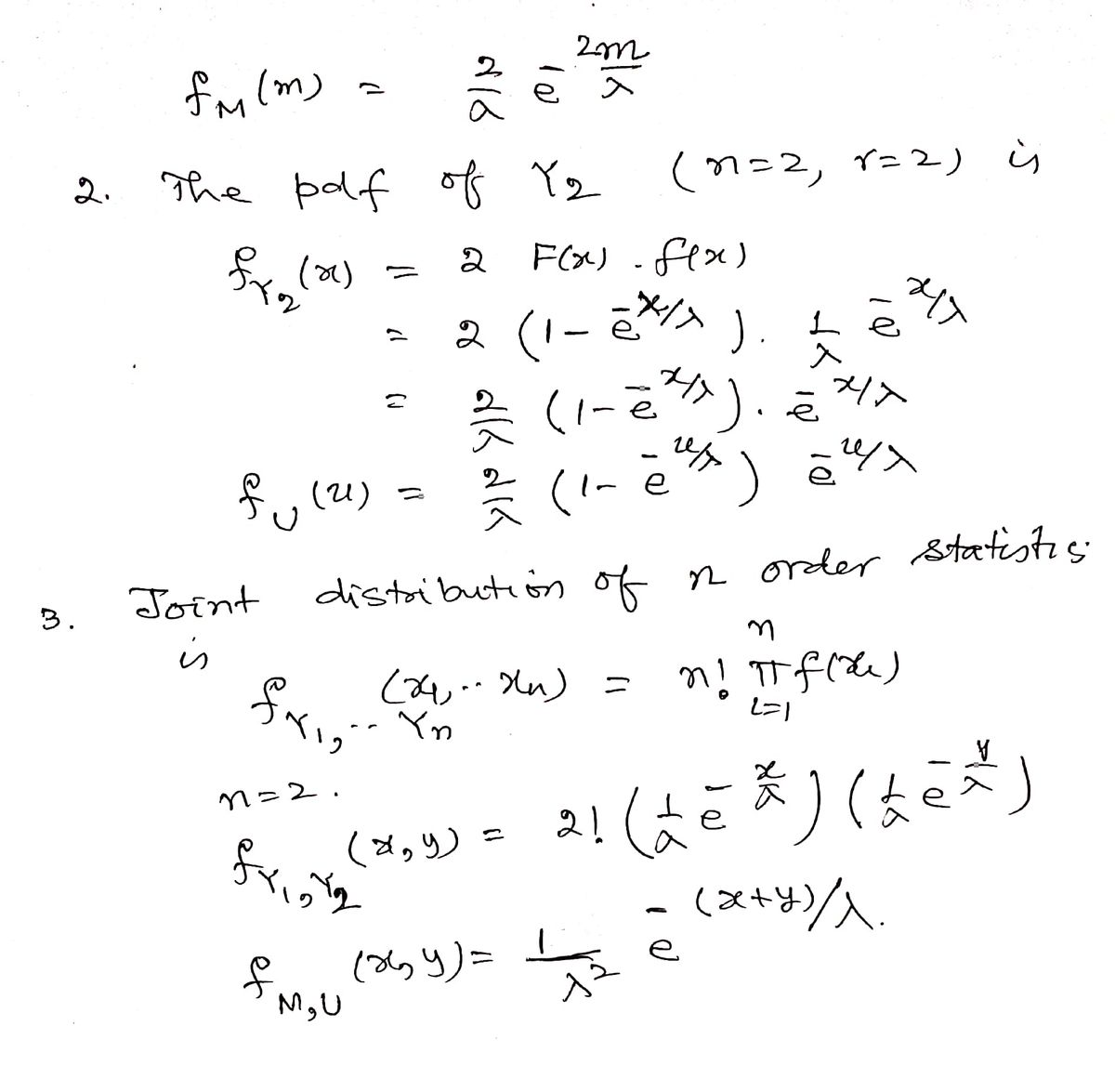1.Firstly, I think in the first part of the question, you make a mistake on calculation, see image 1, hopefully my solution is the correct one. 2.Secondly, why distribution function of U is P(X<=x, y<=x)? could u explain it in more detail please? 3.Could u please correct ur solution of part 3 which requires to calculate the joint distribution function based on correct part 1 answer please? thanks a lot :)
1.Firstly, I think in the first part of the question, you make a mistake on calculation, see image 1, hopefully my solution is the correct one. 2.Secondly, why distribution function of U is P(X<=x, y<=x)? could u explain it in more detail please? 3.Could u please correct ur solution of part 3 which requires to calculate the joint distribution function based on correct part 1 answer please? thanks a lot :)
A First Course in Probability (10th Edition)
10th Edition
ISBN:9780134753119
Author:Sheldon Ross
Publisher:Sheldon Ross
Chapter1: Combinatorial Analysis
Section: Chapter Questions
Problem 1.1P: a. How many different 7-place license plates are possible if the first 2 places are for letters and...
Related questions
Question
1.Firstly, I think in the first part of the question, you make a mistake on calculation, see image 1, hopefully my solution is the correct one.
2.Secondly, why distribution
3.Could u please correct ur solution of part 3 which requires to calculate the joint distribution function based on correct part 1 answer please?
thanks a lot :)

Transcribed Image Text:Step 2: explanation part 2>
2. To compute the distribution function and probability density of U, which is the maximum of two
exponential random variables X and Y, we can use a similar approach.
a. Distribution function of U: The distribution function F_U(x) for U is the probability that U is less than or
equal to x:
?
F_U(x) = P(U ≤ x) = P(X ≤ x₂ Y ≤ x),
A
Since X and Y are independent, we can write this as:
F_U(x) = P(X ≤ x)*P(Y ≤ x)
For exponential random variables with rate parameter λ, the distribution function is given by:
F_X(x) = 1- e^(-^x)
So:
F_U(x) = (1-e^(-A^x))^2

Transcribed Image Text:1. If X≤Y₁ l =x: (F_M(x) = 1 - e^(-λx)) X
So, for M = X:
F_M(x) = (1 - e^(-λx)) * (1 - P(Y ≤ x))
Since Y is also an exponential random variable with rate parameter X, we have:
F_Y(x) = 1 - e^(-x)
Therefore:
F_M(x) = (1-e^(-x))*(1- (1 - e^(-x)))
F₁(x) = P(MEX) = P(XEX, Y>x) = PI(XEX) P (Y>X) by independence = P(X{X) (1-P (YEX))
P(X≤x,
As - Fx(x) = 1 - e²^* = Fycy), we have:
-
-2λx
F₁(x) = (1 - e²^*^) (1 - (1 - e²^^ ) ) = (1 - e²^^) e²^^ = e =^^ - e²
е
X>0
so f√(x) =
S
f₁(x) = (2x F₁(x) = -de¯^× + 2de¯²^×
{
0, x < 0
Expert Solution
Step 1: Distribution of order statistics
Try in this way using the concept of Order Statistics.This will simplify your problem.


Step by step
Solved in 3 steps with 14 images

Recommended textbooks for you

A First Course in Probability (10th Edition)
Probability
ISBN:
9780134753119
Author:
Sheldon Ross
Publisher:
PEARSON


A First Course in Probability (10th Edition)
Probability
ISBN:
9780134753119
Author:
Sheldon Ross
Publisher:
PEARSON
